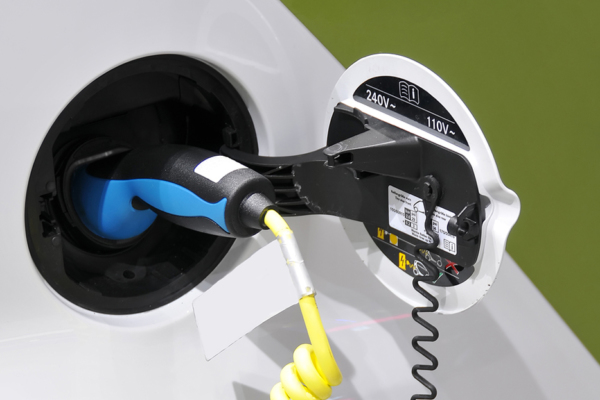Manufacturers are moving forward with electric vehicle technology, and the new equipment change the needs of those stopping at truckstops and travel plazas.
“Are electric vehicles here to stay? All of the data now says, yes. It is not a question of if, it is a question of when, but the when is happening now as well,” said Deepesh Nayanar, global head of e-mobility for Gilbarco-Veeder Root.
NATSO Members Are In a Prime Position
Nayanar sat down with NATSO to discuss the future of electric vehicles and the key points truckstops and travel plazas need to consider when examining the technology. He said NATSO members are in a prime position for serving those who purchase electric vehicles. C-stores and truckstops over decades have figured out what the right locations are plus they are in prime locations where they can take advantage of the traffic flow patterns and driving population passing by, he explained.
What’s more, they are already set up with restrooms, food and merchandise, which give them an advantage. “It is in our industry’s benefit, but it is ours to lose as well,” Nayanar added.
Keep an Eye on Electric Vehicle Trends
It is important for truckstop and travel plaza operators to keep an eye on electric vehicle trends, as EVs introduce a whole new set of competitors for the industry. “You’re completing with anyone who has commercial real estate and wants to generate more revenue from a charging event,” Nayanar said, adding that anyone with a chain infrastructure and real estate, such as fast-food restaurants, cafes, grocery stores or hotels, can become a potential competitor.
One risk of waiting and watching to see what happens with EV demand is that customers start forming new habits. “There is potential to lose these early customers. That is the incentive to act now,” Nayanar said.
Trends and Projections
Currently, the population of electric vehicles can be low and targeted in certain pockets of the country, but the numbers are growing rapidly and have been for the past four to five years, Nayanar said. “Now it is approaching about 3 percent of vehicles sold in the U.S.,” he explained, adding that Europe averages about the same and China is ahead on EV sales.
Even with the growth, it will take quite some time to turn over the current fleet of vehicles. In the U.S., there are more than 300 million cars, and about 16 million cars a year are sold. The average fleet holding is 11 years, so there will be a mix of vehicles on the road for decades as EVs gain a bigger share, Nayanar said.
The price and range of EVs is a big contributing factor on consumer’s rate of adoption. Choice and availability is increasing, with 120 models of EVs being introduced over the next few years. “The price of the vehicles are going to come down since the cost of batteries are going down. There is going to be more choice,” Nayanar said.
Certain markets have incentives to help offset the costs of installing EV charging equipment, but most funds come with some type of caveat, which may mean operators give up some of their autonomy. Nayanar suggested operators understand what type of funding programs are available and what they entail. He said there are funding programs through equipment manufacturers, state-based funding programs and utilities.
Technology and Infrastructure
Gilbarco-Veeder Root has invested in fast charging e-mobility technology, through investing in Tritium, a leading global fast-charge technology provider, to get the right equipment to operators. “Our know-how around the c-store creates combined value we can bring to our customers,” Nayanar said. “Most of the truckstop customers, Gilbarco is a brand they trust, we have the service infrastructure already in place, and we have linkage in the store to drive efficiency.”
As operators prepare for the future, it makes sense for them to make sure they have space and power infrastructure for future upgrades, Nayanar said. “We believe on the truckstop/c-store side, the model is to fuel or charge as quickly as technology allows,” he said. “Customers traveling over 100 miles or even 300 miles want to stop for the shortest amount of time to take a break, grab a bite and use the restroom.”
Gilbarco-Veeder Root keeps track of funding programs and can help operators find available funding or help operators create a pilot program to learn more about EV opportunities at their location.
Class 8 electrification for long-haul vehicles is still a ways out. “Fleet electrification is happening but the markets where it is happening are motor pools, transit busses, pick-up and delivery vans and regional trucking applications,” Nayanar said.
Read the recent Stop Watch magazine featuere, The Future of Electric Vehicles, for more on this topic.
Subscribe to Updates
NATSO provides a breadth of information created to strengthen travel plazas’ ability to meet the needs of the travelling public in an age of disruption. This includes knowledge filled blog posts, articles and publications. If you would like to receive a digest of blog post and articles directly in your inbox, please provide your name, email and the frequency of the updates you want to receive the email digest.


